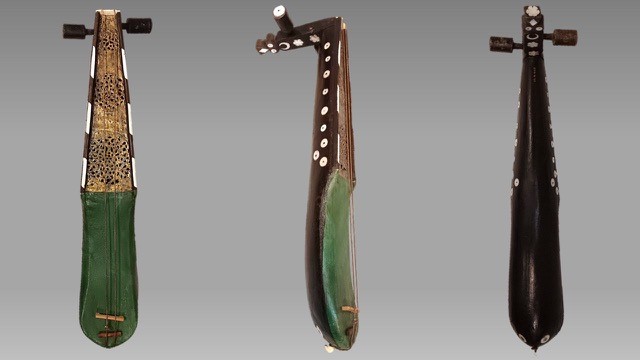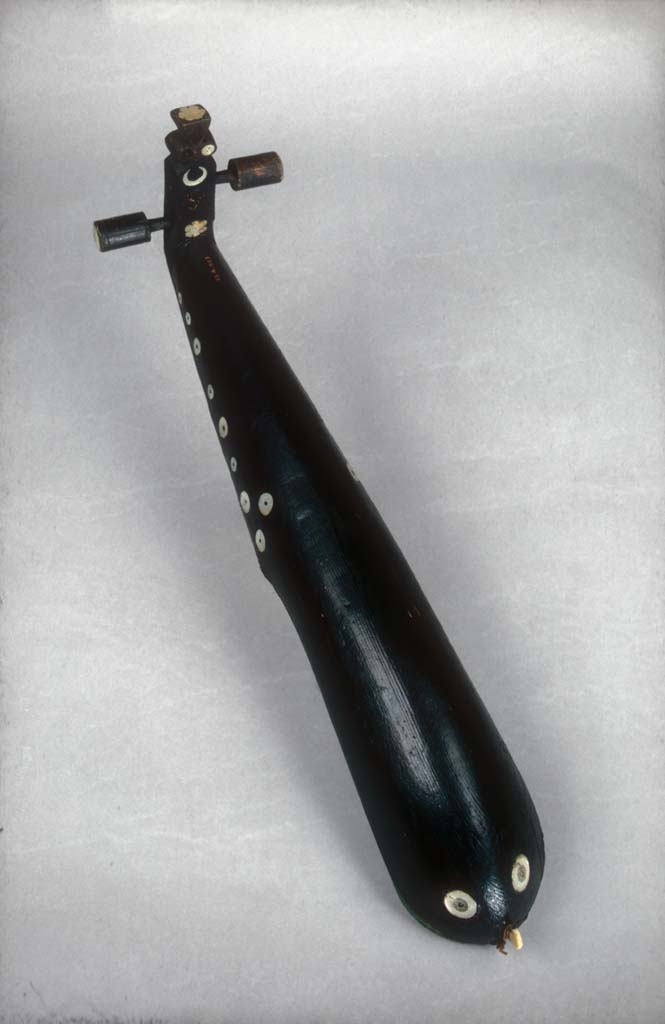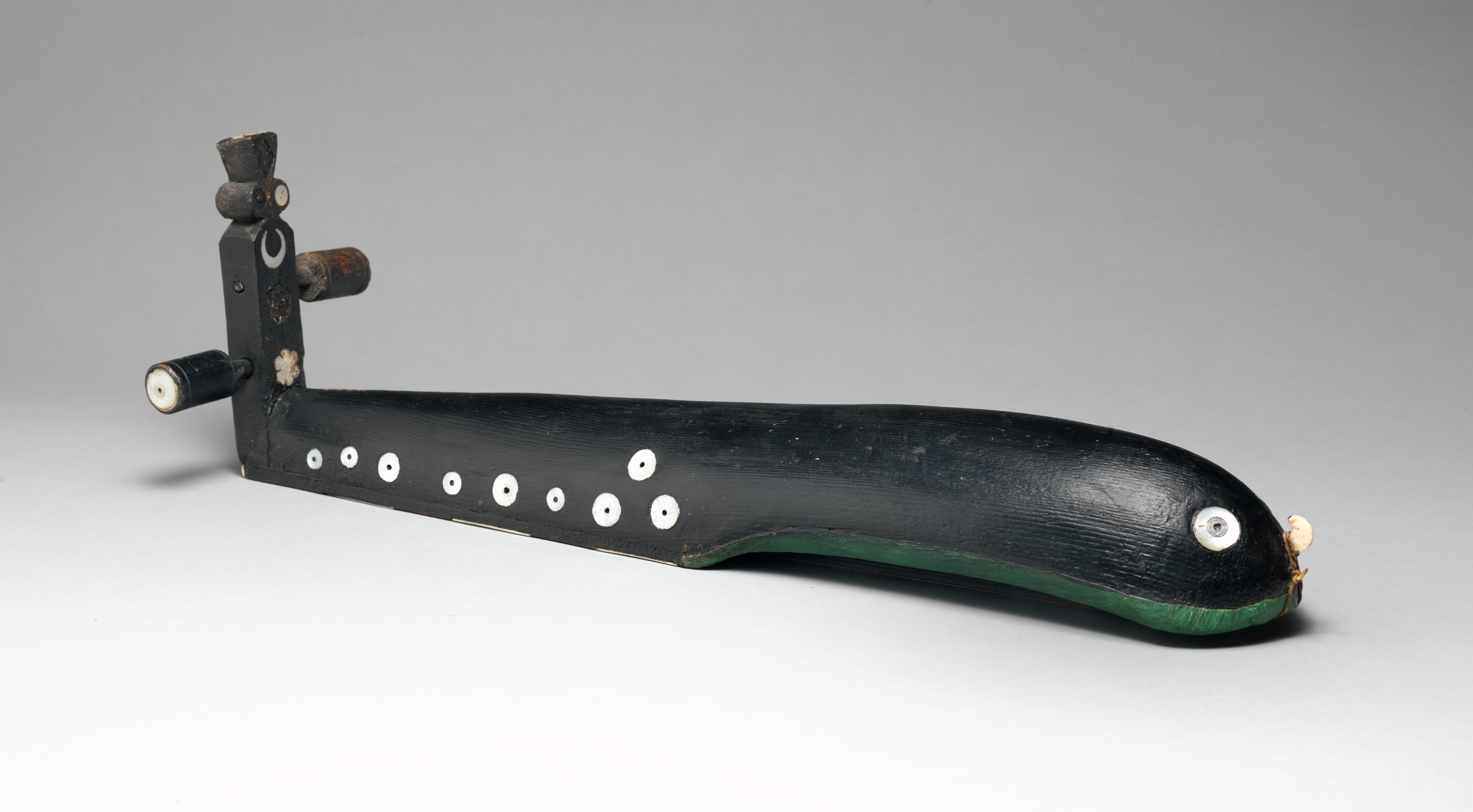Rebab
The term rebab refers to chordophones, particularly lutes and lyres, found in Islamic and Islamic-influenced lands. In North Africa, where this example is from, the rebab is most often a boat-shaped, two-string fiddle without frets. It is held across the player's body, with the pegbox against the left shoulder and the tailpiece on the right knee, and is played with a bow. The rebab is never played alone, and is used only to accompany singing. This instrument has been decorated with a delicate ivory inlay, in patterns reminiscent of other decorative objects of the same period from Algeria. The design on the back is reminiscent of a dolphine, symbol of good luck.
Due to rights restrictions, this image cannot be enlarged, viewed at full screen, or downloaded.
This artwork is meant to be viewed from right to left. Scroll left to view more.



.jpg)
.jpg)


